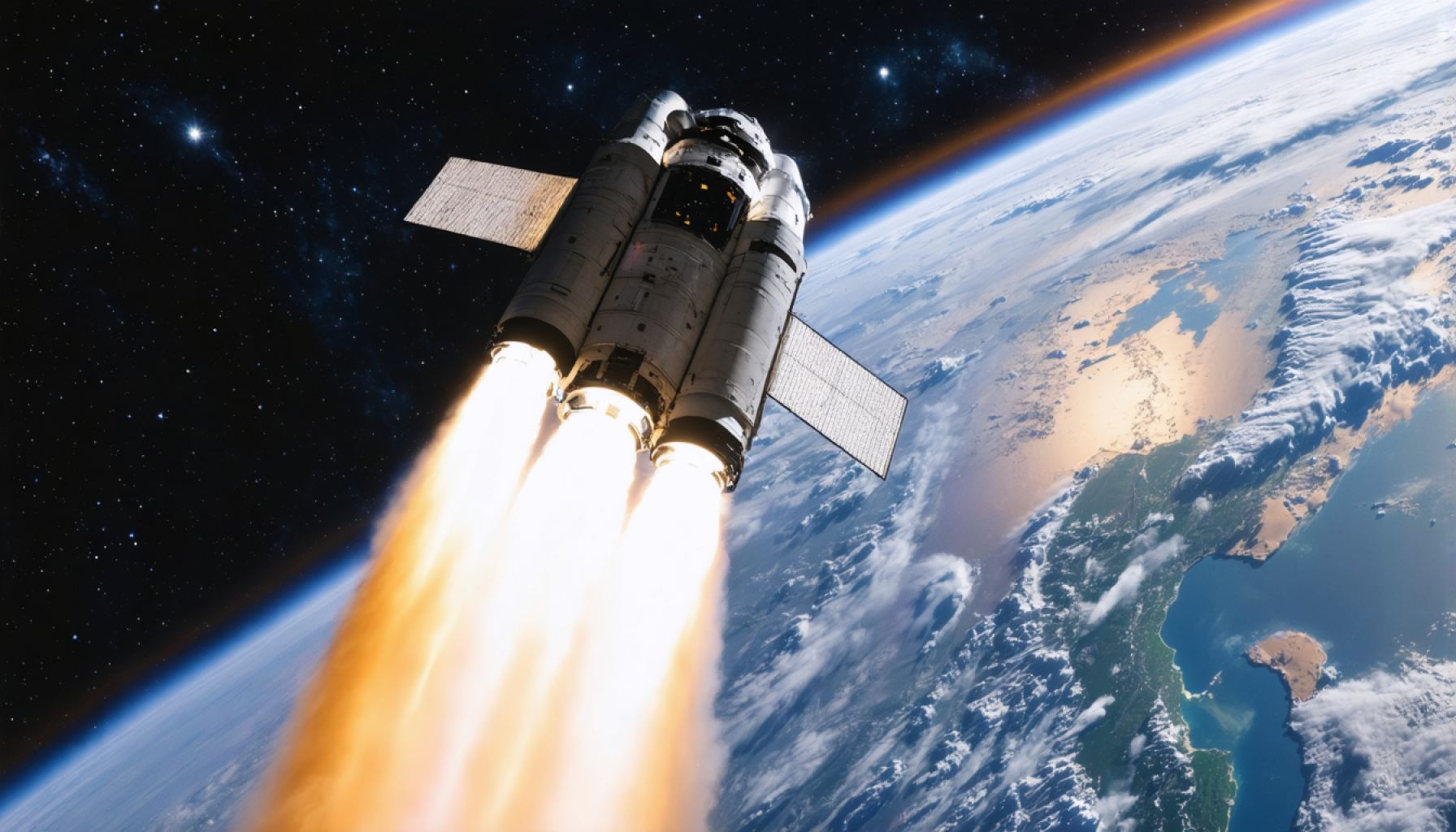- NASA and Boeing are advancing towards launching the CST-100 Starliner for human space travel.
- Over 70% of past Starliner anomalies have been resolved, though significant propulsion issues remain.
- Tests at White Sands focus on refining thruster and thermal systems, targeting a final resolution by 2025.
- New helium system seals are being tested to reduce leak risks and enhance reliability.
- A crewed Starliner mission may occur by late 2025 or 2026, depending on test outcomes.
- NASA considers alternative cargo missions to ensure sustained International Space Station support.
- The ultimate goal is to reinforce human presence in space using dual safe spaceflight systems.
- This effort underscores humanity’s drive for exploration and innovation in space.
The thrill of space exploration is palpable as NASA and Boeing inch closer to realizing their ambitious vision. At the heart of their endeavors is the CST-100 Starliner, a spacecraft poised to ferry humans to the stars. However, persistent propulsion system issues underscore the complexity of the cosmic quest.
Despite formidable challenges, a beacon of progress shines brightly. More than 70% of past anomalies have been successfully tackled since the Starliner’s uncrewed voyage to the International Space Station. Yet, the propulsion conundrums await resolution, anticipated to echo into 2025.
In the heart of New Mexico’s White Sands Test Facility, rigorous tests flare to life. Engineers delve deep into the intricacies of Starliner’s thrusters and thermal defenses. Determined, they sketch plans for thermal shields and tweak thruster pulse profiles — a dance against overheating. Simultaneously, new helium system seals undergo scrutiny, reducing fears of leaks and heralding resilience.
With a hopeful eye to the sky, Steve Stich, leading NASA’s Commercial Crew Program, speaks of a future where these tests light the path forward. As the calendar turns, the next chapter for Boeing could unfold with a crewed mission as soon as late 2025, or perhaps 2026. But NASA’s pragmatic approach remains adaptable, contemplating cargo-only missions should the need arise.
The core mission is clear: bolster human presence on the International Space Station with dual spaceflight systems ensuring unparalleled crew safety. This strategic foresight is key to sustaining humanity’s celestial foothold.
As NASA and Boeing embark on this high-stakes symphony of science and engineering, their journey reflects humanity’s eternal longing for exploration — a testament to human ingenuity and the relentless pursuit of knowledge.
Unveiling the Future of Space Travel: NASA and Boeing’s Ambitious Starliner Project
Introduction
NASA and Boeing’s collaborative mission to advance human space exploration through the CST-100 Starliner is a testament to the relentless pursuit of celestial exploration. Despite encountering propulsion system issues, their resolve remains steadfast, with more than 70% of past anomalies rectified following the Starliner’s uncrewed mission to the International Space Station (ISS). The journey towards human spaceflight persists, offering intriguing insights and potential innovations in the aerospace industry.
The Starliner’s Path Forward: Addressing Propulsion Challenges
The propulsion system challenges that NASA and Boeing continue to face underscore the complex nature of space travel. These challenges are not unique and highlight the meticulous engineering processes required. The testing at New Mexico’s White Sands Test Facility is essential, with a focus on thruster performance and thermal protection systems. This involves:
1. Thermal Shield Innovations: Engineers are exploring advanced materials and designs to enhance the Starliner’s resistance to extreme temperature variations encountered during re-entry.
2. Helium System Seals: Upgrades to the helium seals are aimed at minimizing leaks and ensuring long-term operational reliability.
3. Thruster Pulse Profiles: Adjustments to these profiles are critical to preventing overheating and ensuring precise maneuvering capabilities.
Real-World Impact and Future Use Cases
1. Dual Spaceflight Systems: The primary mission of maintaining a continuous human presence on the ISS with robust, redundant systems is vital for international collaboration and research.
2. Crewed and Cargo Missions: Adjustability in mission design, ranging from crewed missions to cargo-only configurations, provides operational flexibility.
Market Forecasts and Industry Trends
The space exploration industry is poised for substantial growth, with global investments expected to exceed $1 trillion by 2040 (as per a report by Morgan Stanley). Boeing’s role in this growth is pivotal, potentially enhancing its market position with the Starliner’s success.
Security, Sustainability, and Reliability
Ensuring crew safety is paramount. Investments in advanced testing for reliability and systems designed for minimal environmental impact align with NASA’s prioritization of sustainable exploration.
Controversies and Challenges
The Starliner project has faced scrutiny due to cost overruns and delays. However, these challenges are common across large-scale aerospace projects and continue to be addressed through rigorous testing and iterative improvements.
Conclusion and Quick Tips
NASA and Boeing’s CST-100 Starliner project represents a significant step towards more flexible and reliable crewed spaceflight. For enthusiasts and professionals alike:
– Stay Informed: Follow updates from reputable sources like NASA for the latest developments.
– Engage with the Community: Participate in forums and discussions to exchange insights and stay informed about future missions.
– Explore Career Opportunities: With the industry’s growth, new roles in engineering, project management, and logistics are on the horizon.
In conclusion, while NASA and Boeing face hurdles, their commitment to innovation and safety continues to drive the Starliner project forward, reflecting a broader vision for humanity’s future in space exploration.
